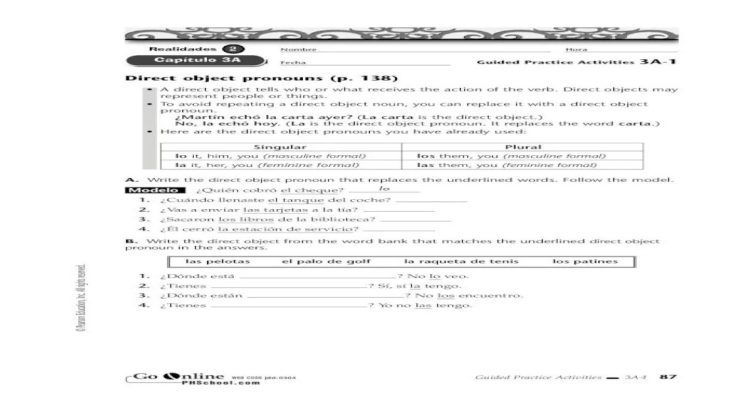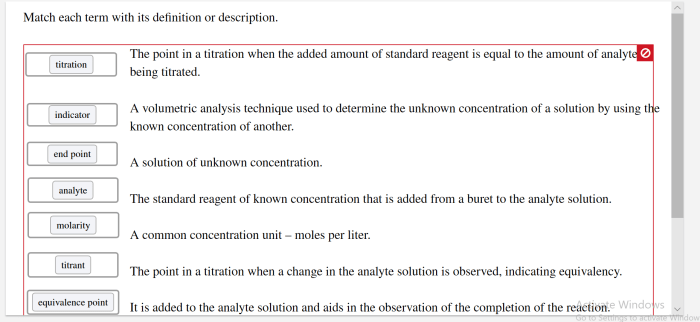Applying life skills textbook PDF offers a comprehensive guide to unlocking the potential of life skills. This invaluable resource provides a structured approach to acquiring and refining essential skills, empowering individuals to navigate personal and professional challenges with confidence.
By delving into the intricacies of life skills textbooks, this guide unravels the secrets to choosing the perfect fit, analyzing content effectively, and implementing engaging learning strategies. It also explores assessment techniques to track progress and identify areas for improvement.
Introduction
Life skills are a set of abilities that help individuals navigate everyday challenges and make informed decisions. These skills encompass a wide range of areas, including communication, problem-solving, decision-making, and interpersonal relationships. They are essential for personal growth and development, as well as for success in various aspects of life, including education, career, and social interactions.Utilizing
a textbook specifically designed to enhance life skills can be highly beneficial. Such textbooks provide a structured approach to learning and practicing these skills, offering guidance and support from experts in the field. They often include real-life examples, exercises, and case studies that help readers connect the concepts to their own experiences and apply them in practical situations.
Benefits of Using a Textbook
There are numerous benefits associated with using a textbook to enhance life skills. These include:
-
-*Comprehensive Coverage
Textbooks provide a comprehensive overview of essential life skills, ensuring that learners are exposed to a wide range of topics and perspectives.
-*Structured Learning
The structured format of textbooks helps learners progress through the material in a logical and organized manner, building upon prior knowledge and skills.
-*Expert Guidance
Textbooks are often written by experts in the field of life skills, providing learners with access to the latest research and best practices.
-*Real-Life Examples and Exercises
Textbooks often include real-life examples and exercises that help learners connect the concepts to their own experiences and apply them in practical situations.
-*Assessment and Feedback
Many textbooks include assessment tools and feedback mechanisms that help learners track their progress and identify areas for improvement.
Choosing the Right Textbook
Selecting the ideal life skills textbook is crucial for effective learning. Consider the following factors to make an informed choice:
Target Audience:Determine the intended audience for the textbook. Is it designed for students, professionals, or a specific demographic?
Learning Objectives:Identify the specific skills and knowledge you aim to acquire. The textbook should align with your learning goals.
Content Coverage:Examine the scope and depth of the textbook’s content. Ensure it covers the essential life skills you need.
Evaluating Textbooks
To evaluate different textbooks, consider the following criteria:
- Organization and Clarity:Assess the textbook’s structure and writing style. Is it easy to navigate and understand?
- Examples and Case Studies:Look for textbooks that provide real-life examples and case studies to illustrate concepts.
- Exercises and Activities:Ensure the textbook includes practice exercises and activities to reinforce learning.
- Reviews and Recommendations:Read reviews and consult with others who have used the textbook to gain insights.
Content Analysis
Examining the textbook’s structure and organization helps determine its effectiveness in enhancing life skills. Key concepts, theories, and practical applications should be clearly identified and analyzed to assess their relevance and impact.
Textbook Structure and Organization
The textbook should be well-structured with logical progression and clear organization. Chapters should be organized into sections and subsections, providing a hierarchical structure for easy navigation and understanding.
Key Concepts and Theories
Identify the fundamental concepts and theories covered in the textbook. These concepts should provide a theoretical framework for understanding and applying life skills. Theories should be explained clearly and supported with real-world examples.
Practical Applications
The textbook should emphasize practical applications of life skills, providing hands-on exercises, case studies, or real-life scenarios. These applications should demonstrate how the concepts and theories can be implemented in daily life.
Relevance and Effectiveness
Evaluate the relevance of the content to enhancing life skills. The textbook should address contemporary issues and challenges faced in real-world situations. It should also be engaging and accessible to readers, promoting active learning and skill development.
Learning Strategies
Effective learning strategies are essential for making the most of your textbook. By implementing active reading, note-taking, and self-assessment techniques, you can enhance your understanding and retention of the material.
Additionally, integrating the textbook into your broader learning plan or curriculum will help you contextualize the information and make connections to other learning experiences.
Active Reading
- Preview the material before reading to activate prior knowledge and set a purpose for reading.
- Read actively, engaging with the text by highlighting, annotating, and summarizing key points.
- Reflect on what you’ve read by asking questions, making connections, and evaluating the author’s perspective.
Note-Taking
Effective note-taking helps you organize and retain information.
- Develop a consistent note-taking system that works for you, such as Cornell notes or Artikels.
- Capture key concepts, definitions, examples, and important details.
- Review and revise your notes regularly to reinforce learning.
Self-Assessment
Self-assessment helps you monitor your understanding and identify areas for improvement.
- Use practice questions, quizzes, or self-tests to assess your comprehension.
- Reflect on your performance and identify strengths and weaknesses.
- Adjust your learning strategies accordingly to address areas needing improvement.
Integrating the Textbook
Connect the textbook material to your broader learning experiences.
- Attend lectures and participate in class discussions to supplement your textbook knowledge.
- Engage in group study sessions or online forums to discuss and clarify concepts.
- Apply textbook concepts to real-world situations or projects to enhance understanding.
Activities and Exercises
Life skills textbooks often include a variety of activities and exercises designed to help students develop and practice the skills they are learning. These activities can range from simple discussions and role-playing exercises to more complex projects and simulations.
The purpose of these activities is to provide students with opportunities to apply the concepts they are learning in a practical setting. By doing so, students can develop a deeper understanding of the skills and how to use them in real-life situations.
Types of Activities and Exercises
- Discussions:Discussions allow students to share their thoughts and ideas about the material they are learning. They can also be used to help students develop their critical thinking skills.
- Role-playing exercises:Role-playing exercises allow students to practice using the skills they are learning in a simulated setting. This can help them to develop their confidence and their ability to apply the skills in real-life situations.
- Projects:Projects allow students to apply the skills they are learning to a real-world problem. This can help them to develop their problem-solving skills and their ability to work independently.
- Simulations:Simulations allow students to experience a real-life situation in a controlled environment. This can help them to develop their decision-making skills and their ability to cope with stress.
Benefits of Activities and Exercises
- Provide opportunities for practice:Activities and exercises provide students with opportunities to practice the skills they are learning. This can help them to develop their proficiency and their confidence in using the skills.
- Help students develop critical thinking skills:Activities and exercises can help students to develop their critical thinking skills by requiring them to analyze information, solve problems, and make decisions.
- Increase student engagement:Activities and exercises can help to increase student engagement by making learning more active and interactive.
- Provide feedback:Activities and exercises can provide students with feedback on their progress. This can help them to identify areas where they need to improve.
Implementing Activities and Exercises Effectively
- Choose activities and exercises that are appropriate for the age and skill level of your students:The activities and exercises you choose should be challenging but not so difficult that students become frustrated.
- Provide clear instructions:Make sure that students understand the instructions for each activity or exercise before they begin.
- Monitor student progress:Monitor student progress as they complete activities and exercises. This will help you to identify students who need additional support.
- Provide feedback:Provide students with feedback on their performance. This feedback should be specific and actionable so that students know what they need to do to improve.
Assessment and Evaluation
Assessing students’ progress and evaluating the effectiveness of a textbook are crucial for continuous improvement. Regular assessment provides insights into students’ understanding and helps identify areas for improvement.Effective assessment involves a combination of formative and summative assessments. Formative assessments, such as quizzes, discussions, and assignments, provide ongoing feedback throughout the learning process.
They allow students to gauge their progress and make necessary adjustments. Summative assessments, such as tests and projects, provide a comprehensive evaluation of students’ learning at the end of a unit or course.To evaluate the effectiveness of the textbook, consider the following methods:
Student Feedback
Collect feedback from students through surveys, focus groups, or anonymous evaluations. Ask about their experience with the textbook, its clarity, relevance, and overall usefulness.
Instructor Observations, Applying life skills textbook pdf
Observe students’ engagement with the textbook during class discussions, assignments, and assessments. Note any areas where students struggle or excel, and use this information to identify potential improvements.
Data Analysis
Analyze student performance data from assessments to identify trends and patterns. Look for areas where students consistently perform well or poorly, and consider whether the textbook’s content or presentation may be contributing factors.By gathering feedback and analyzing data, you can identify areas for improvement in the textbook’s content, organization, or pedagogical approach.
This information can be used to make revisions and enhance the effectiveness of the textbook for future students.
Popular Questions: Applying Life Skills Textbook Pdf
What is the purpose of a life skills textbook?
Life skills textbooks provide structured guidance and practical exercises to enhance essential life skills, such as communication, problem-solving, decision-making, and emotional regulation.
How do I choose the right life skills textbook?
Consider factors such as target audience, learning objectives, content coverage, and the textbook’s structure and organization.
What are effective learning strategies for using a life skills textbook?
Active reading, note-taking, self-assessment, and incorporating the textbook into a broader learning plan are effective learning strategies.



